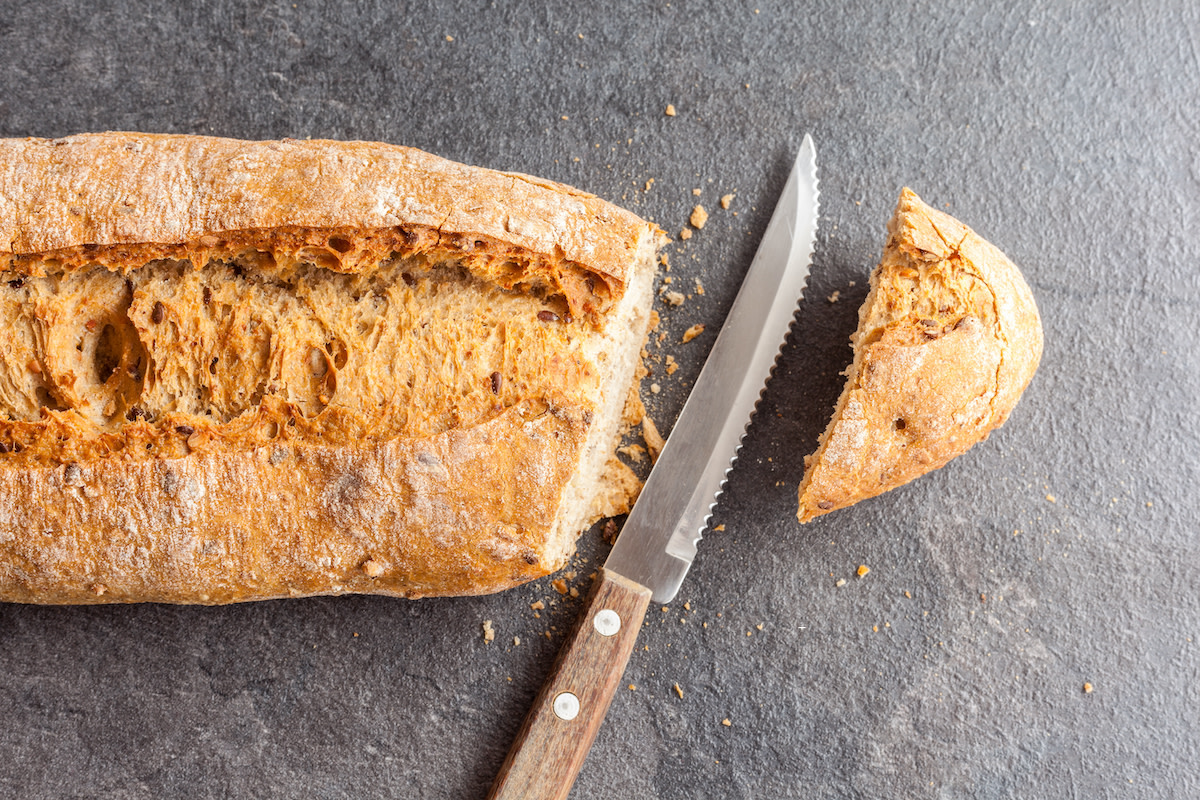How to Sharpen a Serrated Knife: Method and Tips
Written by MasterClass
Last updated: Jan 4, 2022 • 3 min read
Knowing how to sharpen a serrated knife will save you both time and frustration in the kitchen. Dust off that honing rod and learn how to get the sharpest blade possible.
Learn From the Best
What Is a Serrated Knife?
A serrated knife is a cutting instrument consisting of a sharp, scalloped blade secured to a handle. This kitchen tool is distinct from a chef’s knife because of the blade’s scalloped appearance. Each scallop point is a serration, and these tiny points along the cutting edge earn the serrated knife its role in your knife set because they allow it to tackle tasks other kitchen knives are ill-suited for.
The serrated edge is perfect for cutting into foods with hard exteriors and soft interiors (like bread) and those that are squishy (like tomatoes) because exerting force on the sharp points along the blade edge breaks the surface of the food. Meanwhile, the parts of the blade between the serrations—known as gullets—allow the blade to slide through the food smoothly.
While the bread knife is the most common type of serrated knife, serrated blades come in various sizes for different tasks. Steak knives, for example, are often serrated.
Why Do Serrated Knives Get Dull?
As hard as some bread crusts may be, serrated knives—and knives in general—get dull through contact with the cutting surface, rather than contact with food. As the knife blade hits the cutting board repeatedly, it begins to wear down.
How to Sharpen a Serrated Knife
You can’t sharpen a serrated knife using a traditional knife sharpener or even most electric knife sharpeners due to the unique shape of the blade. (Some high-end electric sharpeners feature a serrated knife slot, but they’re not as precise.) Instead, the sharpening tool you’ll need is a ceramic honing rod, also known as a sharpening rod. Here’s how to use it:
- 1. Locate the knife’s beveled side. Your serrated knife should have a flat side and a beveled side. The beveled side of the blade is what allows it to cut and is what you’ll be sharpening.
- 2. Carefully run the sharpening rod through each gullet. Unfortunately, there’s no shortcut to serrated knife sharpening since it requires sharpening each section between the serrations. However, if you’re thorough, you won’t have to do it again for a while. Place the honing rod flat against the angle of the beveled edge to ensure that you have the correct angle, then run it through the gullet toward the cutting edge, keeping it along the bevel the whole time. Repeat until you’ve sharpened all of the gullets.
- 3. Remove the burrs. As you sharpen your knife, the small pieces of metal you remove (called burrs) will collect on the flat side of the knife. Remove these metal pieces by running the flat end of the knife along a whetstone (a stone block lubricated with water or oil) or a piece of fine-grit sandpaper. Your knife should now have a clean, sharp edge.
3 Tips for Sharpening Serrated Knives
Here are a few tips to keep in mind when determining how often to hone your serrated knife’s blade:
- 1. Choose a lower-maintenance knife. A serrated knife with fewer serrations isn’t just easier to sharpen; it also may be a better cutting tool in certain instances. When you slice with a serrated knife, you’re concentrating force into each serration. Therefore, the fewer serrations there are, the more forcefully they cut into the food.
- 2. Only sharpen when necessary. The design of a serrated knife means that most of the tool doesn’t make contact with the cutting board, so you don’t need to sharpen it as often as other kitchen knives. Only sharpen your serrated knife when you notice it’s getting dull. If you use your serrated knife infrequently, it may only require sharpening every few years.
- 3. Use the bread test. If you’re unsure whether your serrated knife requires sharpening, pay attention the next time you use it to cut bread. If you wind up generating a lot of crumbs, it wasn’t a clean cut, and you should consider sharpening the knife.
Mise En Place
To perfect the mother sauces and make French cuisine at home, you must master essential cooking techniques. Discover Chef Thomas Keller’s approach to setting up a home kitchen and sourcing quality ingredients like fish and clams when you sign up for the MasterClass Annual Membership.
